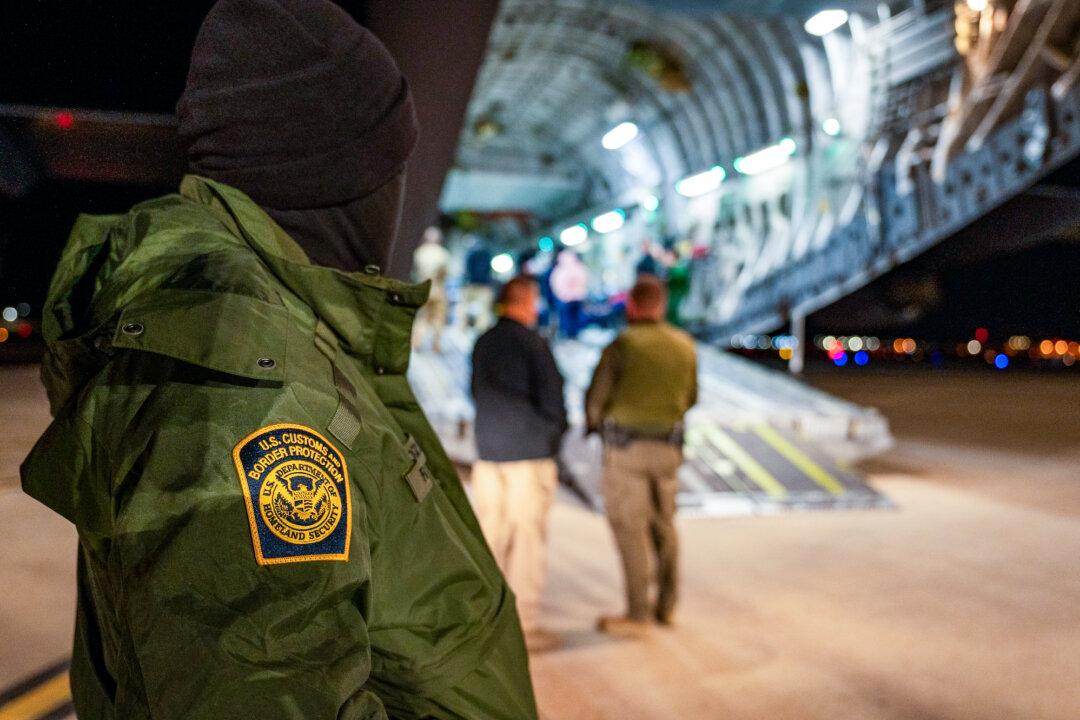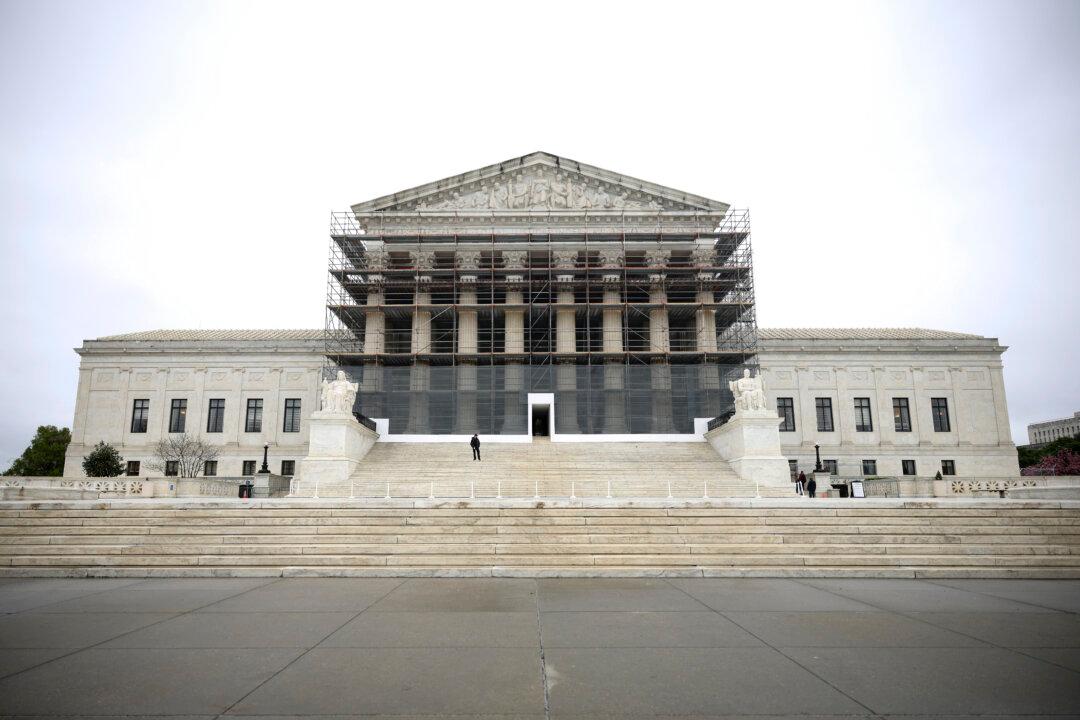The blue-chip Dow surged over 1,600 points Monday, with the furious rally coming as a drop in the daily death toll in New York raised hopes that the pandemic could level off soon.
All three major Wall Street indexes—the Dow, Nasdaq, and S&P 500—opened sharply higher on Monday, before climbing modestly intraday.
According to preliminary closing data from Reuters, the DJI rose 1,627.46 points, or 7.73 percent, to 22,679.99; the S&P 500 (SPX) gained 175.03 points, or 7.03 percent, to 2,663.68; and the Nasdaq Composite (IXIC) added 540.16 points, or 7.33 percent, to 7,913.24.
Still, despite Monday’s bounce, the Dow remains around 23 percent below its all-time high in mid-February.

“All the market cares about right now is the virus and any positive event will see some buyers coming in,” said Dennis Dick, proprietary trader at Bright Trading LLC in Las Vegas, in remarks to Reuters. “With New York City numbers getting better on the weekend, people are happy that we may be closer to the top of the peak than we thought.”
Still, U.S. officials have warned of a “peak death week” from the pandemic, with the death toll topping 10,000.
New York Gov. Andrew Cuomo said Sunday he believed there needed to be a mass rollout of rapid testing in order to achieve a “return to normalcy” after the peak of COVID-19 infections passes.
“I think you see the return to normalcy when we have an approved rapid testing program that can be brought to scale, Cuomo told a daily briefing on the CCP virus response. “That is going to be the answer, I believe.”
Wall Street’s fear gauge, or the VIX, fell to its lowest in two weeks, but analysts cautioned against calling a bottom. During the financial crisis of 2007-08, the Dow took months to establish a bottom even after the volatility index plummeted.
“It’s a big stretch to try to extrapolate a reduction in the number of cases into when we’re going to be able to get back to work,” said Robert Pavlik, chief investment strategist at SlateStone Wealth LLC in New York, in remarks to Reuters. “People are still going to be very hesitant to go into restaurants and bars.”
JPMorgan Chase Chief Executive James Dimon wrote in his annual letter to shareholders that he expects “a bad recession.”
“We don’t know exactly what the future will hold—but at a minimum, we assume that it will include a bad recession combined with some kind of financial stress similar to the global financial crisis of 2008,” he said.
The country wasn’t prepared for a pandemic, but “we can and should be more prepared for what comes next,” he added.





